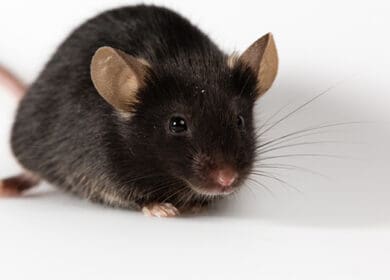ApoE-KO
ApoE-KO
| Strain details | |
|---|---|
| Nomenclature | B6.129P2-Apoetm1UncJ/Ozarc |
| Common name | ApoE KO |
| Synonyms | B6.APOE, ApoE KO, B6.129P2-Apoetm1Unc/J |
| Strain | Congenic, Targeted mutation |
| Coat colour | Black (a/a) |
| Species | Mouse |
| JAX stock number | 002052 |
| Location | Area Oz2 |
Strain descriptions
- MHC haplotype: H2Kb
- Complement factor: C5 normal
- Mice homozygous for the Apoetm1Unc mutation show a marked increase in total plasma cholesterol levels that are unaffected by age or sex.
- Fatty streaks in the proximal aorta are found at 3 months of age. The lesions increase with age and progress to lesions with less lipid but more elongated cells, typical of a more advanced stage of pre-atherosclerotic lesion.
- Moderately increased triglyceride levels have been reported in mice with this mutation on a mixed C57BL/6 x 129 genetic background.
- Aged apoE-deficient mice (>17 months) have been shown to develop xanthomatous lesions in the brain consisting mostly of crystalline cholesterol clefts, lipid globules, and foam cells. Smaller xanthomas were seen in the choroid plexus and ventral fornix.
- Recent studies indicate that apoE-deficient mice have altered responses to stress, impaired spatial learning and memory, altered long term potentiation, and synaptic damage.
- Homozygous mice are viable and fertile.
- The Apoetm1Uncmutant strain was developed in the laboratory of Dr. Nobuyo Maeda at The University of North Carolina at Chapel Hill to replace part of exon 3 and part of intron 3 of the apolipoprotein E (Apoe) gene replaced with a neomycin resistance (neo) cassette. The targeting vector was electroporated into 129P2/OlaHsd-derived E14Tg2a embryonic stem (ES) cells and resulting mice were backcrossed to C57BL/6J inbred mice for at least 10 generations.
- This strain is transferred from ARC to Ozgene ARC in 2023.
- ApoE KO mice are useful for studying cardiovascular disease, atherosclerosis and fat metabolism, as well as the role of ApoE in Alzheimer’s disease.
Past ARC and transfer reports:
Current Ozgene ARC reports (from 01-Jun-2023)
- This strain is housed in Area Oz2/3/5
- Please see Oz2/3/5 health reports on our Biosecurity page
- These mice are sold subject to The Jackson Laboratory’s Conditions of Use and also the Australian Patent Number (2004268530). Information regarding conditions of use is available at: JAX General Terms and Conditions.
- JAX mice are the gold standard for animal model research.
- Ozgene ARC terms and Conditions
- Mouse images are representative only. Actual phenotypes may vary based on genotype, sex, age, husbandry, health status, and other factors
- See www.jax.org for more strain information.


